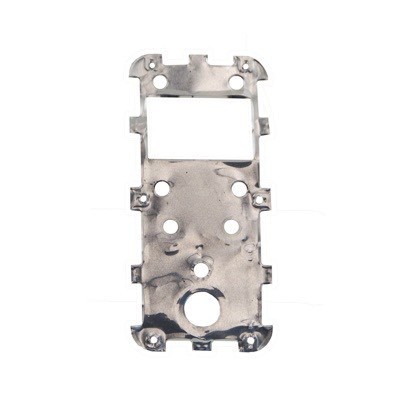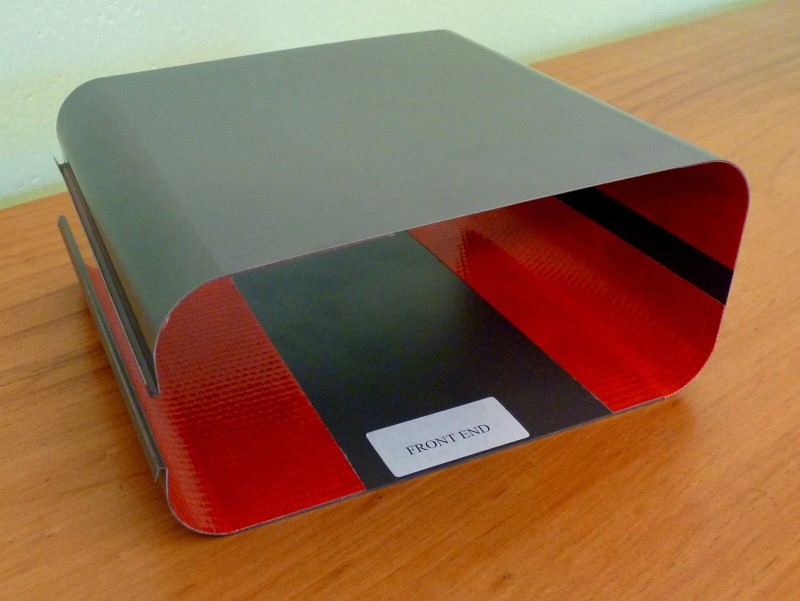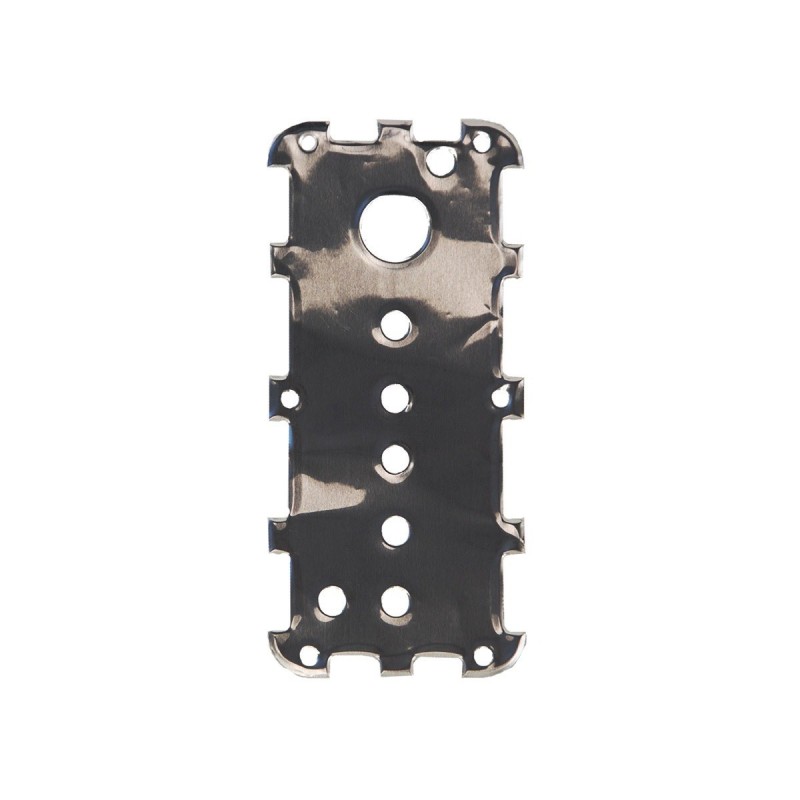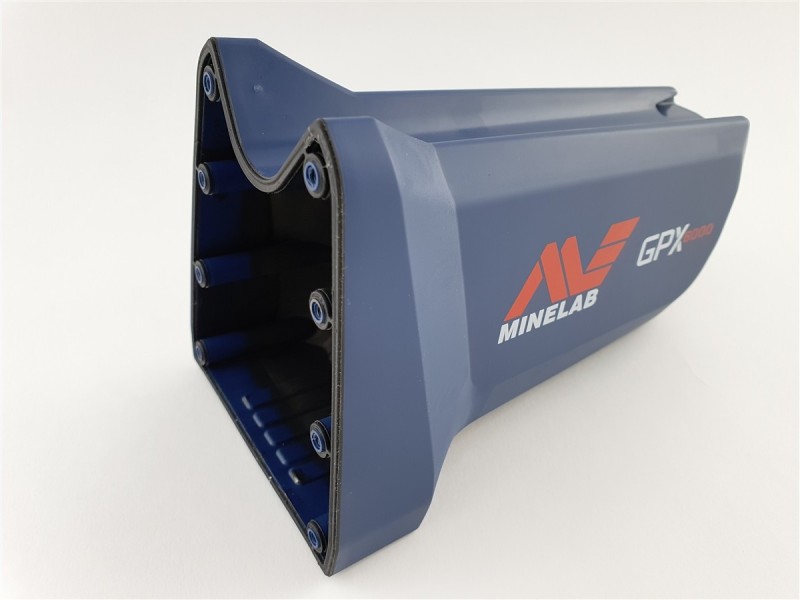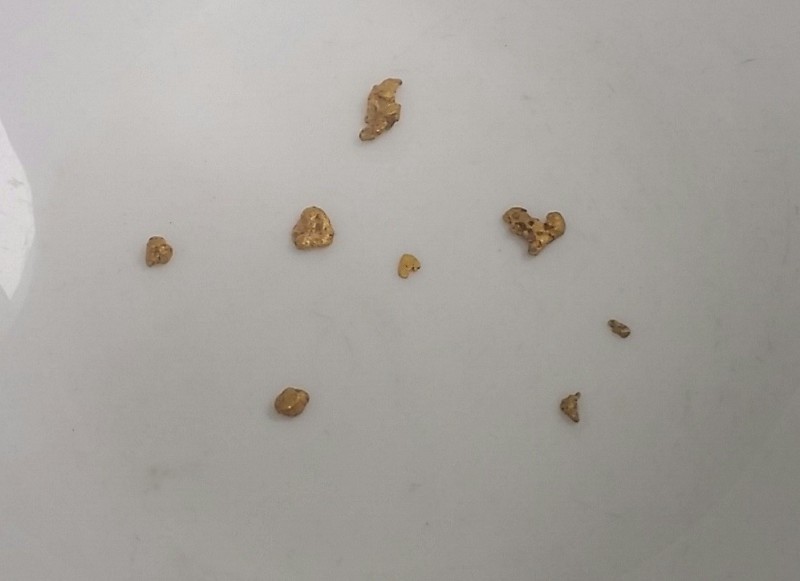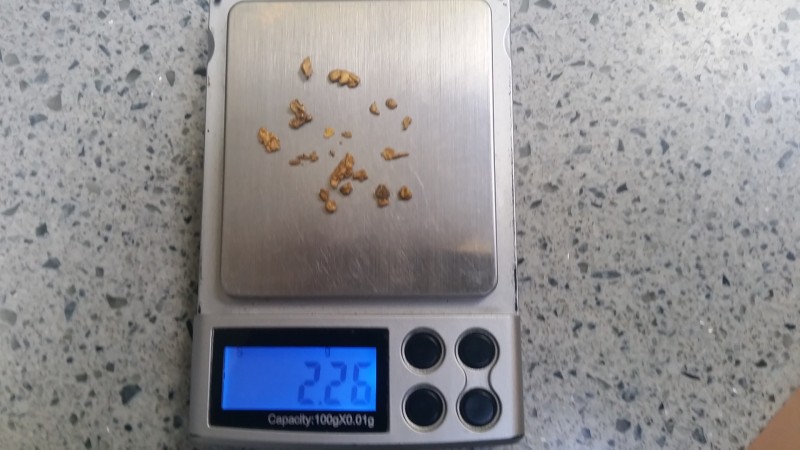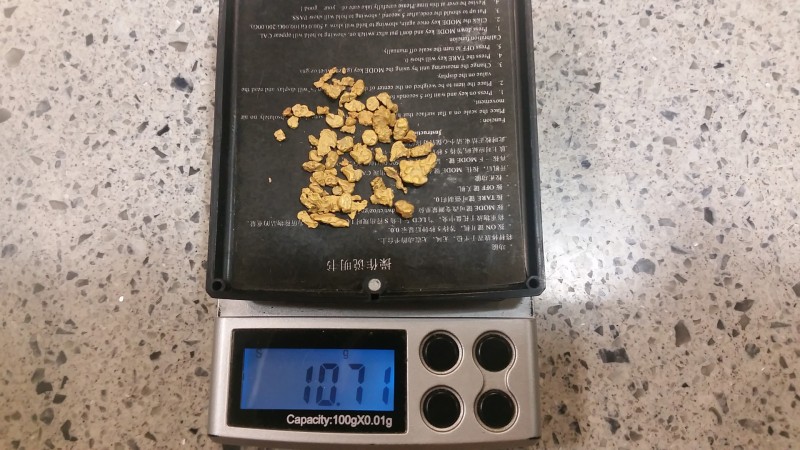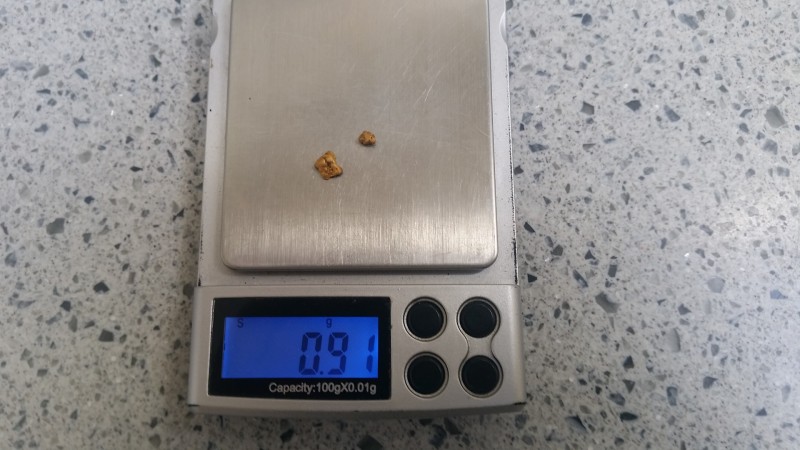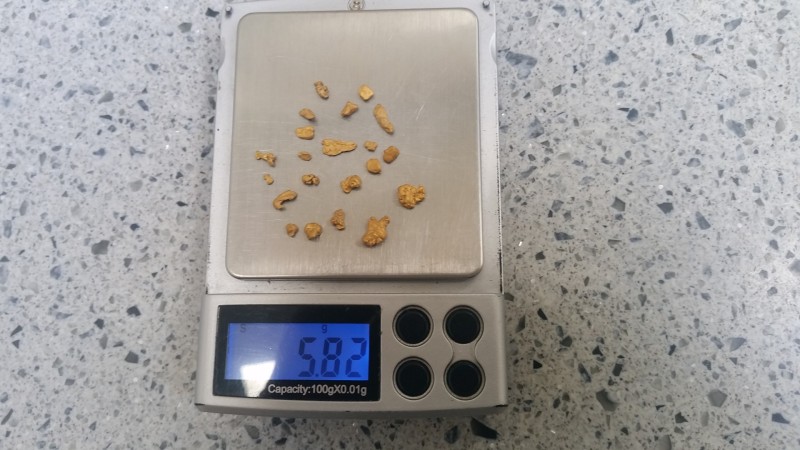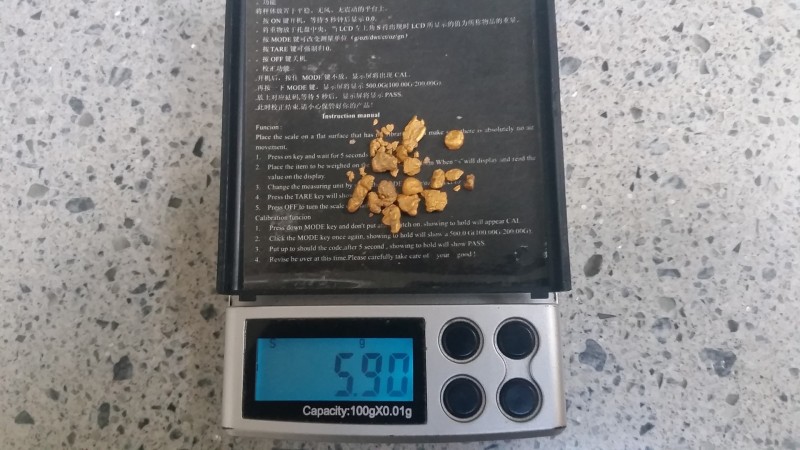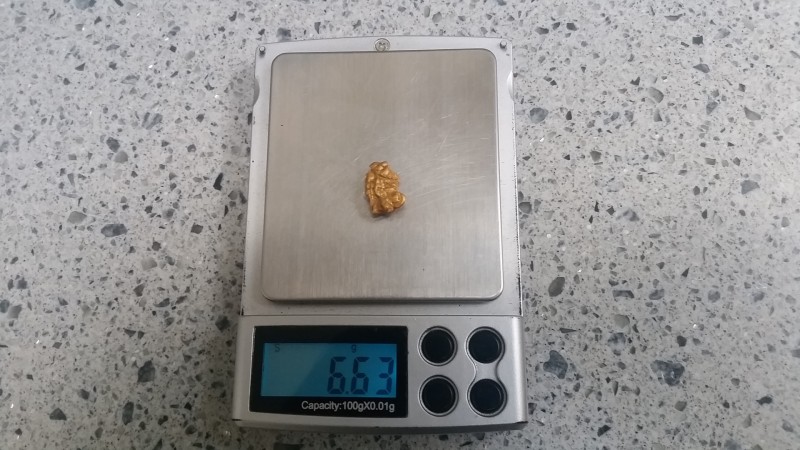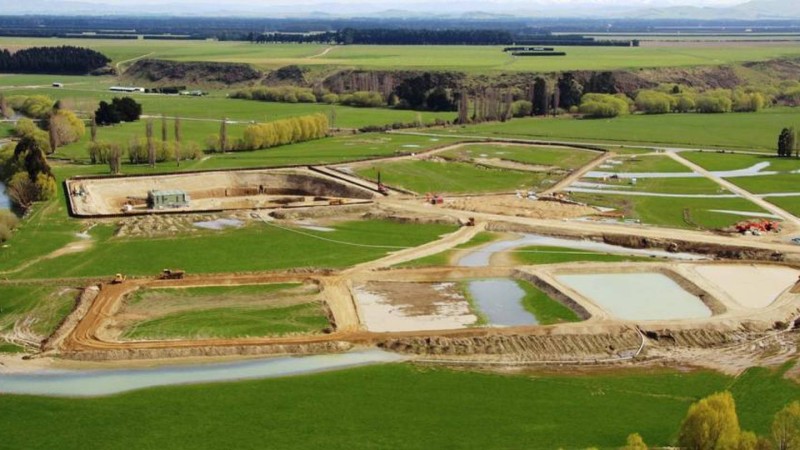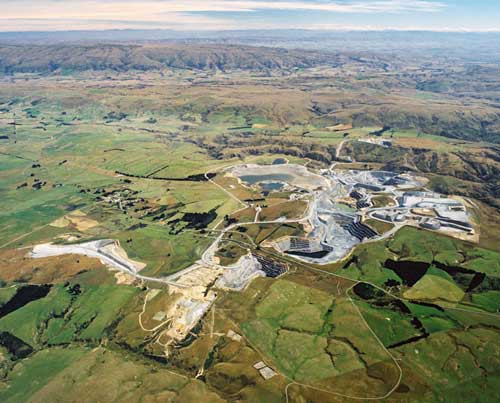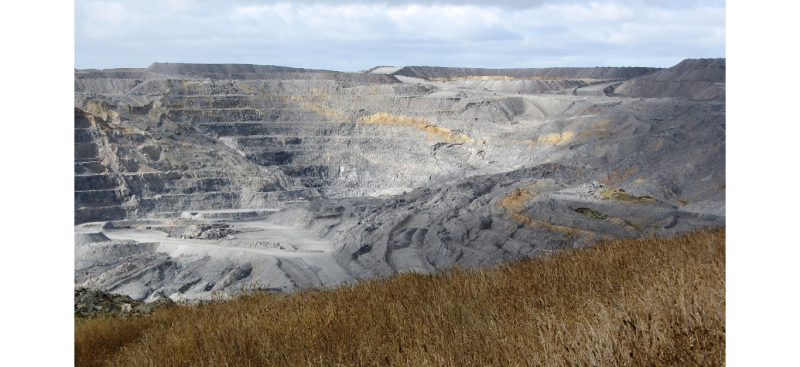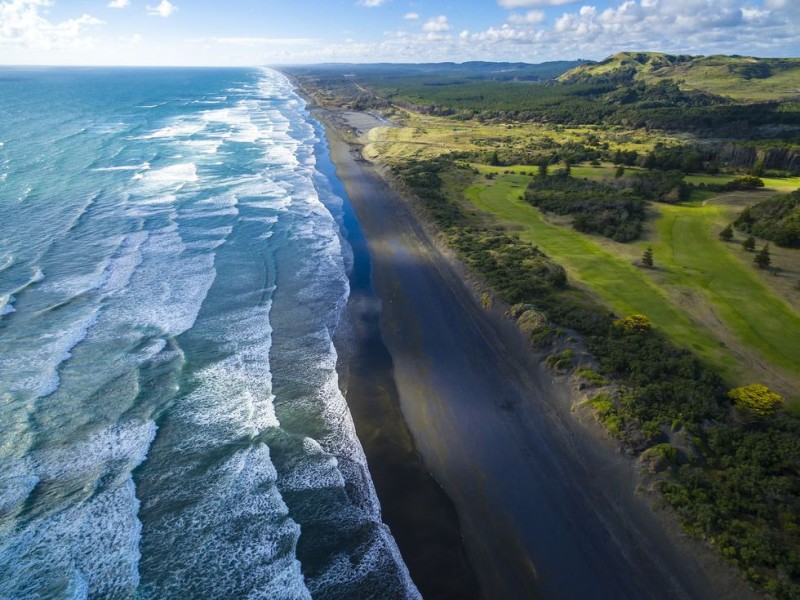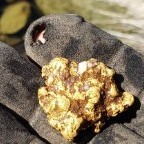Search the Community
Showing results for '"GPX 4500"'.
-
I've used the Quest Wirefree on my GPZ with no issues, it's latency isn't as fast as aptX LL however it's more than adequate for a gold detector. It's range is better than the WM12 that came with the GPZ too. I've used it on my GPX 4500 too with no problems. The 2.4ghz wireless has a better range and stability than Bluetooth. I purchased mine from Nenad, always a smooth easy transaction with Nenad, I wish he was a NZ Dealer 😉
-
Will The Next Gen Detectors Address Emi ???
phrunt replied to dogodog's topic in Metal Detector Advice & Comparisons
I watched a TV show on Antartica meteorites once, it's the easiest place to find them, dark colours really stand out on white and it's not soft snow, it's often rock hard ice. If I encountered one I'd likely call it another stupid hotrock and kick it away, I doubt I'd recognise one. We've had a couple of them in NZ already this year caught on CCTV cameras with the bright flash and object flying across the sky. I've only seen two in my lifetime, one quite big one in Brisbane, Australia at about 3am after getting off a plane, we were driving back from the airport to the mother in laws house, no cars at all on the road, most properties with lights out, the place was asleep and a massive flash that I thought a speed camera got me, then we see the object flying in the sky but it's angle looked like it was going to hit the ground pretty close, it wasn't going across the sky more coming downwards.. The other I was just sitting in my Spa at night time again in Brisbane and there was a much smaller flash and an object flying across the sky on a downwards trajectory. Nothing at all like the previous one I mentioned though. I'd love to find one, I doubt I ever will. I think EMI mitigation is the final frontier for metal detectors, many in the know have commented depth levels have been maxed out for years, target ID stability was maxed out with the CTX and now we are heading backwards to less stable to improve other aspects of detector performance I guess, tiny gold performance peaked with the GB2 back when I was a school kid. EMI seems one area where improvements could be made, and in a way have to be made as EMI gets worse every year for almost every detectorist. Frequency shifting to me seems the best solution for VLF's, and now with most modern detectors being multi frequency they have coils more suitable for moving frequencies. They should be able to establish during a "EMI noise scan" procedure which frequencies in their pre-programmed modes are being affected by EMI and shft off them slightly until the noise clears while leaving the quiet frequencies alone. Older detectors like the T2 where I do my frequency shift in a previous video on this thread perfectly demonstrate how well frequency shifts work, even tiny ones like the T2 has under 1kHz can make a huge difference. I don't think we should get used to these lightning fast 3-5 second noise cancels though, good things take time and the most effective detectors at the moment for noise cancels take time, the GPX 4500 seems like it takes about a minute if not more to go through its 254 channels while you're holding your heavy GPX coil up in the air. The GPZ 7000 although slightly quicker still feels like about 30 seconds. Both these detectors recommend you hold your coil up above the ground. I personally have found noise cancels most effective holding coils above the ground in maximum sensitivity to get the most EMI into the detector, then after it thinks its done as good as it can with the noise cancel I move my sensitivity to the desired level. -
Could it be the self generated EMI hindering performance? They may have sounded about the same but doesn't mean they are. I always felt my GPX 6000 did better after it's EMI mod fix. It really makes you wonder though, some people like Woodys GPX 4500/5000 mods, others think they don't do much at all if anything. JW has a GPX 4500 with woody mods and he seemed to like it over a stock one from memory. I just can't understand how smart people that are capable of making a GPZ 7000 could make such a simple mistake that a minor shielding change alters performance so much so I have my doubts about the mod so far without more information. The 6000 was different, it was a part that for some worked fine, others not, so inconsistency in components and all those testing it perhaps had good ones and it's when hundreds get out into the public's hands the dodgy ones showed their ugly faces. Minelab should have done all they could to get their hands on a noisy one being returned under warranty and troubleshooting the cause though, it shouldn't have taken a year or more to work it out other than they didn't want to and were hoping the problem would just go away. Maybe they just thought it was a bad run of components that would sort itself out with no change to anything without even working out what is the cause as a new batch comes through with the problem solved and those with the bad ones will think it's normal, pretend the problem doesn't exist and it will go away. Maybe they're just always leaving some fuel in the tank for the next model, I can see it now.... GPX 8000, 3" more depth on a test nugget (20 cent coin in this case) over the GPZ 7000. 🙂
-
I just got a SP01 from Rob. Anyone have a favorite filter setting (1,2 or 3)or setup? I’m using it on a GPX 4500
-
These are reviews on metal detecting and prospecting equipment I have personally used over the years. In the last 50 years I have used a lot of metal detectors and prospecting gear! A lot of items are not made any longer but may be found used. In each instance my goal is to provide details and commentary not found anywhere else. For more user reviews of metal detectors visit the new Metal Detector Database. Do not miss Steve's Guide to Gold Nugget Detectors for honest opinions on gold nugget detectors updated on a regular basis. Visit the Detector Prospector Forums for expert advice. User Guides & Catalogs here. Fisher CZ Models - Some old favorites. Fisher CZX - Speculative new detector model.... Fisher F19 - General purpose VLF detector with prospecting mode. Fisher F75 - Flagship VLF model with prospecting mode. Fisher Gold Bug 2 - Dedicated VLF prospecting detector, extremely hot on small gold. Fisher Gold Bug Pro - Excellent value general purpose VLF prospecting detector. Fisher Manta - New pulse induction beach detector in the works at First Texas. Garrett AT Gold - Excellent value waterproof VLF prospecting detector. Garrett ATX - High performance pulse induction beach and prospecting detector. Garrett Infinium LS - Pulse induction beach and prospecting detector. Minelab Equinox 800 - General purpose detector with prospecting mode. Minelab Eureka Gold - Dedicated VLF prospecting detector, three selectable frequencies. Minelab Gold Monster 1000 - Dedicated VLF prospecting detector, extremely hot on small gold. Minelab GP 3000 - High performance pulse induction prospecting detector. Minelab GPX 4500 - High performance pulse induction prospecting detector. Minelab GPX 5000 - High performance pulse induction prospecting detector. Minelab GPZ 7000 - New high performance professional prospecting detector. Minelab SDC 2300 - Pulse induction prospecting detector, extremely hot on small gold. Minelab X-Terra 705 Gold - General purpose detector with prospecting mode. Nokta/Makro AU Gold Finder - Dedicated VLF prospecting detector, extremely hot on small gold. Nokta/Makro FORS Gold - General purpose VLF detector with prospecting mode. Nokta/Makro FORS Gold Plus - Excellent value VLF prospecting detector. Nokta/Makro Gold Kruzer - General purpose waterproof gold prospecting detector. Nokta/Makro Gold Racer - General purpose gold prospecting detector. Nokta/Makro Impact - Flagship VLF detector with prospecting mode. Nokta/Makro Racer - General purpose detector with prospecting mode. Teknetics T2 - Flagship VLF detector with prospecting mode. Tesoro Lobo SuperTRAQ - General purpose VLF prospecting detector. White's GMT - Dedicated VLF prospecting detector, very hot on small gold. White's GMZ - Dedicated VLF prospecting detector, hot on small gold. White's Goldmaster 24K - Dedicated VLF prospecting detector, extremely hot on small gold. White's MXT - General purpose VLF detector with prospecting mode. White's MX Sport - General purpose waterproof VLF detector with prospecting mode. White's TDI - Pulse induction beach and prospecting detector. White's V3i - Flagship VLF model with prospecting mode. XP DEUS V5 - Flagship VLF model with prospecting mode. XP ORX - New model from XP with an emphasis on gold prospecting. Comparison Reviews Garrett ATX vs Minelab GPX 5000 Waterproof Pulse Induction Detectors Compared For more user reviews of metal detectors visit the new Metal Detector Database.
-
First Afternoon Using The Goldhawk 10x5 Mono
phrunt replied to Aureous's topic in Detector Prospector Forum
It's possible they have, modern electronics less prone to EMI interference, the shielding paint maybe all that's needed. On the older GPX with the thick foil on the ends with the metal housing they had really good shielding, yet the detector was far more prone to EMI than the 6000, so somethings changed. I'm pretty happy with my 6000 in higher EMI areas, such an improvement over older GPX's This is the foil ends off the old GPX under the plastic covers These are connected to the alloy housing, a mistake they made on early GPX 4500's was the blue paint for the housing went over the ends of the housing from being sprayed on, so this shield was touching the paint, not the raw metal thereby the shielding was poor relying on the screws, I scraped the paint off mine on the ends, and it improved it's EMI handling. I've noticed on my 5000 the paint isn't over the ends. I also have one of these which add extra shielding, many thought they're a gimmick but they're not, they do genuinely work, I did connect a wire from it to the shield by a screw terminal though, they don't mention you need to do this and you just put it on as a cover but it's the best way to connect it to the ground of the detector for best results. . It's a cool idea trying to improve the shielding, I'd like to see someone try and if they get any success that's awesome and the feedback should go to Minelab however I'm not sure how much extra shielding would help. With the right coil, I find the 6000 to be pretty good for EMI, especially for a PI and now the EMI Audio fix has been done. @GotAU? Are you using a Torus Neck speaker? It can cause the blips with it's aptX LL glitching when the data rate doesn't keep up so you get a blip or crackle as a broken signal, it's an acknowledged issue with them that can't be fixed and one of the reasons atpX LL is gone and Bluetooth LE now exists. Qualcomm that made aptX LL discontinued it to make aptX Adaptive which resolves this blip problem but it's not as good for detectors as it's latency being slower and moving around to different latency speeds depending on signal strength so Qualcomm is out of the detector game now with standard Bluetooth's new version now being better than a proprietary codec. The Torus seems more prone to blipping than any other aptX product I've got. -
First Afternoon Using The Goldhawk 10x5 Mono
phrunt replied to Aureous's topic in Detector Prospector Forum
It was easier with the GPX 4500/5000 where the screws holding the front and rear fascias on touched the alloy shielding and metal housing which was the floating ground. The 6000 housing shielding is very basic with just some shielding paint on the plastic housing, you'd really need to shield to the PCB, and can't without voiding warranty. So really, not much can be done. -
Thanks Norvic, im intrigued, i dont think I would have thought to approach the set up like that. There is way more variation in how the audio reacts to changing those three setting than I would have expected. (or compared to GPX 4500) I dont have any experience with the 6000 yet. What do you think about the clipped threshold Im experiencing? If I crank up the threshold to get the faint but smooth buzzing mosquito its too loud and dampens the sharpness of a target. The difference happens between 17-20. 16-17 having the clipped audio response to a target breaking into the threshold. I guess im attempting to replicate the sound profile of my gpx threshold. Also I havent been able ,thus far, to run up the sensitivity higher than 4 for any length of time to see how that changes the threshold quality.... its really fun to be learning a new machine
-
These are your ground balancing pulse induction (GBPI) options new in U.S. dollars when not on sale here. Prices will differ in other countries. Don’t bother with anything else unless shopping used, then older model Minelab GPX detectors like the GPX 4500 might be a bargain possibility. Frequency does not matter with GBPI enough to even get into that. The case can be made the 7000 is not a PI but also not worth dwelling on that. Minelab GPZ 7000 $8499 Minelab GPX 6000 $5999 Minelab GPX 5000 $3999 Garrett Axiom $3995 Minelab SDC 2300 $3399 Garrett ATX $2379
-
.thumb.jpg.ac5e8ee36e43bcab745dbc623fcf1874.jpg)
Tdi Pro Coil Comparison On The Goldfields
Jim in Idaho replied to karelian's topic in White's Metal Detectors
Jim, before you go that trouble, let's wait and let the snow and ice melt around here, and let me do some testing with this coil. Then that might make an interesting comparison. There must be some electrical difference between them, or why the different labels? Unless it was done just on the ones they eventually exported to the states. Maybe initially they were included in a package deal or something on a GPX 4500, or other, and had the ML label, and then they started the TDI labels for some reason. No way to know. I'll keep you updated, in any case. Jim -
People often say their detector picks up planes going past, yet two GPZ's can detect quite close to each other with no interference at all, it takes you going within something like 50 feet of each other to have an issue. The same with the GPX 6000's, can detect right near each other no problems. I used to have a little more trouble with my GPX 4500 picking up JW's GPZ from a good 100+ feet away and he was blind to my GPX with his GPZ. So they can pick up a plane from a great distance but can only pickup EMI from another detector from a very close range, kinda shows the detector EMI doesn't travel too far I think.
-
I've been experimenting with my Manticore as a nugget hunter, kinda difficult with only an 11" coil as I can often have more than one pellet under the coil at once so I'm desperately waiting for a smaller coil but with the Nox 800 in highly contaminated gold areas with shot gun pellets I used to try take advantage of the Target IDs, the pellets almost always gave a 1 - 2 Target ID as most are on or near the surface and consistent targets, if ever I was getting numbers above that or even below it like a 2 - 3 - 4 -6 or something more bouncy it was far less likely to be a pellet that tended to just bounce solidly in the 1 -2 range and was more often than not gold, I always get excited when the numbers moved off the very solid 1 - 2 it was giving on pellets. The Manticore and I'm sure Nox 900 are doing the same thing with pellets but giving a broader range of targets off that pellet range thereby separating possibly more gold from pellets. Of course this only works if the area has all similar sized pellets of the smaller varieties which fortunately my areas mostly do. Very early days on this yet and no matter what you will miss gold by doing it, probably a lot of gold but if you just have so many pellets around that you spend all day recovering them it does give you an option whereby you can pull some gold from the pellets and waste far less time recovering pellets. The old pick or boot scrape method is fine when using something like the GPX 6000 that misses something like 60% of the very small lead pellets like the #9, but when switching to a VLF and it finds every single pellet known to man life gets more difficult in these crazy pellet areas. My previous method for dealing with this was using a less sensitive detector to the very small pellets like the GPX 4500 and gliding over most tiny pellets with no response but like the small pellets it missed some of the the small gold too so I prefer the Nox/Manticore method. The Nox 800 lumped a lot of small gold in the 1-2 range, the Manticore has spread those same nuggets out further making them easier to identify away from pellets. I also believe I can take advantage of this more than many because in more difficult soils the numbers are far more wild, in my milder gold area soils the target ID's remain good, think a coin hunter in mild soils vs a coin hunter in bad soils, the mild soil coin hunter is using and relying on target ID a lot where as the bad soil coin hunter can not rely on target ID's much at all.
-
Well how about if an after market coil company made some "ultra-hot DD Focused Core (DD-FC)" coils for the GPX 4500 and 5000? A DD coil hotter or equal to my 12x8" Evo on small gold would be nice.
-
I can understand that sentiment, the 6000 really is useless in difficult hot rocks, I can imagine the same in certain ground types. It really is a step backwards from older models like the GPX 4500/5000 and by the looks of it SDC in difficult ground conditions.
-

New To Pulse Induction, Got My Axiom
microsniper replied to Az_Ed's topic in Garrett Metal Detectors
Congrats and good luck Ed! The day I received my 1st PI ( Gpx 4500) was the turning point for me being able to find nuggets! I think partially it was psychological... it boosted my confidence knowing I had a capable machine, made me focus and dedicate more time and energy which in turn equalled more and more finds. Keep us posted on the AXIOM! -
Nugget Finder 17" X 13" Z Search GPZ 7000 Coil
phrunt replied to cobill's topic in Detector Prospector Forum
So what is the go with Nugget Finder? have they discontinued GPX 4500/5000 coils including the DDX DD? Even the GPZ coils have disappeared off their website. They had their website under maintenance for some time and now its back not saying under construction anymore but now it only has the Xceed coil on it. https://www.nuggetfinder.com.au/ I understand they're "technology challenged" with the extremely basic website but it does seem odd the GPZ coils have disappeared off there entirely right after releasing another one, and with only one Xceed coil for sale according to the website they sell only one coil. Hopefully it's some sort of issue that they need to resolve with their website. I can understand discontinuing the older model GPX coils, Coiltek have been slowly winding back the models there too and X-coils discontinued them entirely some time ago, but the GPZ coils not being there seems weird. Sales of older GPX coils would be super slow with the second hand market dominating that and many moving off it onto newer detectors but surely the GPZ coils are doing OK. Hopefully all is well at NF, they've had a rough year or two by the sounds of it and selfishly I really want the GPX 6000 Sadie! -
If you strike it lucky, put in the hard yards to get out of the most commonly known areas and go a bit more remote you can do quite well, this has been a patch JW has found a couple of weeks ago remote in the mountains, he tends to drive there and sleep and detect the next day, then he's been going back to on the weekends to finish it off He was just showing some visitors the area for an exploration day and he took the GM along for a bit of fun and found these in 20 minutes Went back the next day again with the GM to the same spot and got these in 5 hours. All looking very promising so in come the big guns, the next day with the GM and 6000. Noticeable how the gold jumps when the 6000 comes to the party, the smaller bits are the GM checking dig holes. His wife even had a go with the 6000 and did pretty good for a short time, her first nugget was after 5 minutes It was getting a lot harder to find anything now so he went back with the GPZ and 15" CC And this was Friday just gone again with the GPZ and 15"CC with the tiny bits with the GM from the dig holes. And the GPZ didn't disappoint with a whopper for NZ on that last day So while yes we mostly have small gold, there is good gold to be found if you can get off the beaten track a bit, that is just not easy to do, the easy to access areas are just finding the bits missed over the years with older technology or by chance, once you get out away from civilization a bit things can improve dramatically. A small gold mining operation a short drive from my house pulled 75,000 oz of alluvial gold out of what was basically lush green farm paddocks over recent years. Unfortunately for me the gold is small, and very deep so not detectable gold. Alaska sounds so much like New Zealand it's crazy, the soil types, the geography, even the photos 😉 I guess it's why Parker from Gold Rush came here for in the hunt for his wash plant as the ones made here suited his needs, Tony Beets always has his Kiwi gear too. The two areas seem very similar. A mine on the North Island is pulling 35,000 – 45,000 oz gold a year at the moment, it's been there for a long time, a big open pit, and there is another mine in the South Island about 3 hours drive from my house is pulling 145,000 – 155,000 oz gold a year at a place called Macraes. Again, just in farmland. We do have insane black sand beaches though and they're the most mineralized places I ever detect and they just shut down any detector, Tarsacci made a coil specifically for our NZ black sand beaches called their NZ coil for the MDT 8000 detector, from what I can tell it wasn't a success, the only guy I know that bought one was disappointed. The most success I've had was with the GPX 4500 and 5000 where they could actually work on the beaches, the Equinox just overloads and gets about 2cm depth 😛 On the South Island’s West Coast, black sand beaches such as this have successfully been mined for gold. The sands also contain other heavy minerals eroded from the Southern Alps and concentrated on beaches through wave action. In the North Island the black sands are derived from volcanic rocks and dominate the 750 km of shoreline between Taranaki and Cape Rēinga in the far north. Auckland’s black sands are mined and smelted into iron. The same beach close up A lot of New Zealand is national park, and the gold is locked up forever safe in place you're not allowed to mine it, or even detect it, 30% of the entire country is National Park. The other areas are just too difficult to get approval to mine, it's a very difficult thing to do even for the hobbyist with a little dredge, very costly and difficult to get approval anywhere. So while we are known as the land of mild soils, we also have large areas of soils no detector can handle and hot rocks that near kill any detector with the best I've seen so far the GPX 5000 in the hot rocks, although still troubled at least works without sounding off on them when buried as if they were a small nugget, I'm looking at you GPX 6000.
-
Detector Unit Consistency (long Brainstorm)
phrunt replied to GB_Amateur's topic in Detector Prospector Forum
Don't worry about your Minelab pinpointer, they're an embarrassment to the Minelab name. I agree with the noise cancel, the quick noise cancel detectors are a gimmick. The new Manticore noise cancel works, just as do the traditional noise cancels like the GPX 4500/5000 and GPZ. I prefer the older detector style frequency shift over quick noise cancels, it works well. With detectors being so different with performance in different locations from soil conditions and local EMI it gets very hard to do good baseline comparisons. -
Hi, i bought a minelab gpx 4500, it will come with 11" coil. i will use the detector at places heavly searched with for example xp deus 2, ctx3030, and other detectors. the sites are medieval, roman, bronze age, etc. so... i need a deep coil to go deeper than the others detectors. question 1-wich coils do you recomend? question 2- i read that the mono coil are the deepest, but in places with a lot of iron, it would be a pain... i was looking at the detech website, they have mono coils, dd coils, and concentric coils, this concentric coils will go deeper than the dd coils? wich type of coil will be better for this type of conditions? question 3-detech coils vs commander coils, with the same size, they will work almost the same? question 4-i will receive the detector without battery, so i need to buy a new battery. i saw a guy selling a homemade battery, are this type of batterys something i can trust? they will work like a original, and the detector will get the same deep? or its better for me to buy a original battery? thanks
-
GPX 6000 And Powerlines With Mono Coils
phrunt replied to RONS DETECTORS MINELAB's topic in Minelab Metal Detectors
I bought one of them Rodworthy shields for my GPX 4500 as it was rotten near power lines, it's now on my GPX 5000, they actually do work, I was surprised as I thought they might be a gimmick. I also put a small wire from the Rodworthy cover to a screw on the front of the 5000 holding the end plate on which I know those screws connect to the sheilding ensuring the cover itself had connection to the shield of the detector for extra measure. I could even run other detectors closer to it which is easy to verify. -
Would A Used Gpx-4500 Package Be Worth Considering?
matt replied to Az_Ed's topic in Minelab Metal Detectors
I'm not in tune with the used market, but that seems pretty high. If you watch this forum classifieds, you can probably get a much better deal. I found a lot of gold with a gpx 4500, several pounds. -
It is interesting you point that out as that's what I was starting to think, the scale is just different and a Nox 0 to 25 is in fact the same as the Manticore 0 - 30 and the boosted zone is the 31 to 35 which takes it higher than the original Nox but likely equal to the Nox 900. It's really hard to prove that however using edge of detection tiny targets is the best way I know of to establish that, and it is correlating to the scales being different with the overall similar sensitivity level when Nox is on 25 and Manticore is on 30, with the extra potential being in the redline zone if it can be used. The Manticore does seem to handle EMI better if you do for example 25 sensitivity on the Nox and 25 sensitivity on the Manticore however if you run the Manticore at 30 sensitivity where it appears to match the Nox on small gold performance then they are similar with their EMI issues. If you crank the Manticore up to 35 it's going crazy unless you're in a very secluded place, I've done some lakefront hunting away from houses and powerlines by about a 20 minute drive and 35 ran great with only a few farts and pops and no false ID's. If they have indeed adjusted the scale of the sensitivity levels it would make the Manticore artificially appear to handle EMI better than the Nox. I like the long press EMI cancel, I believe it does work better than the standard noise cancel of the Nox 800, it settles on a number. The short press seems a lot like the Nox, just a random number it lands on, very much like the GPX 6000 too, where as when you do a long press on the Manticore and it settles on a number after bouncing between numbers trying to sort itself out, then after a while it locks onto a number and stays there even if you continue to hold it, you can do another long press and it often settles on the same number. It really seems like it is doing something, and it does appear to calm down EMI in some situations better than the original Nox, not all where lowering sensitivity is required. The detectors I've noticed a noise cancel working the best is the GPX 4500/5000 and GPX 7000. Yes they're slow but they really do work. I do like the Manticore, it's build quality so far seems exceptional, can't fault it and it's very nice on the arm, the performance might be a bit hyped up by Marketing and this time also engineering, don't know why they brought the big guns of engineering in to market it as if it turns out not as good as they're saying people might start to distrust engineering as much as they do sales and marketing people. Perhaps with competitors engaging so much with customers they thought using engineers to do some marketing will be a more personal engaged approach that customers will like and they do lap it up.
-
I have a 13 year old GPX 4500 battery that still lasts a full day no problems and doesn't feel any worse than my new battery for life, charges to 8.1 volts when new they charge to 8.2 or 8.3 volts. They're just a battery pack with 18650's in them. I think too much concern is placed on batteries, good quality batteries seem to have a really good life. Look how many of us are still using our Nox and the battery behaves virtually like new, when did it come out? I can't even remember 2017 I think and I got one straight away, it's been drained and charged countless times. I charge it before every use. I wouldn't be concerned about the Axiom battery, I'm sure they've gone for a good quality one and when the time comes they do start to degrade I am confident Garrett will come to the party by having reasonable replacement costs involved, anything's going to be cheaper than a GPX 4500/5000 battery, they're an absolute rip off. Hopefully Garrett reply with DIY instructions for those wanting to take it on, it may even be a battery/batteries you can buy off the shelf somewhere which I think is likely.
-
From what I saw it's a winner at the saltwater beaches. Not sure how it would compare to a GPX 4500 or 5000. I may have to borrow a 4500 from my friend the next time we go out and bury some nickels at different depths just to see. Might even take the 6000 along as well. Not to prove one is better than the other but just to put things in perspective for those that are interested. My gut feeling is the Axiom and 4500 would be very close. We already know a dime at about 14" is no problem for both the Axiom and the Equinox 900 with the 12x15 coil. I would guess from past experience with PI's at the GSL it will pickup a nickel at 16 or 17". I will at some point post the video we did of the Axiom and Equinox going over different targets but will start a different thread.
-
This 11x7in mono coil on the Axiom is SWEET. I find it about the perfect size for most of the rough, rocky, or tight situations where I hunt. I don't feel too bad using it in more open areas either since 11 inches has pretty decent coverage. And it feels extremely light and balanced as well, very appreciated. I would 1000% rather use this combo over my old SDC 2300 and its less than stellar ergonomics. My previous favorite coil was my Nugget Finder Evolution 12x8 mono. I like this Axiom mono coil even more. The NF coil almost never left my GPX 4500 after I mounted it. I don't think I'll take the 11x7 off of the Axiom again any time soon either. These smaller coils can find really small targets and even go deep on larger gold. The 12x8 evo found the 1.2oz nugget pictured in my profile at about 12 inches and the big nuggets often take care of themselves. I also used the hot edge of the mono coil to great affect yesterday. I was able to use the left rounded "tip" of the coil to exactly pinpoint several of the smallest nuggets. I was actually able to forego using my pick and scooped the gravel from between bedrock ridges. Super nice to get the target in the scoop with just a single deep scoop and saved me a lot of time on target recovery, no doubt.



